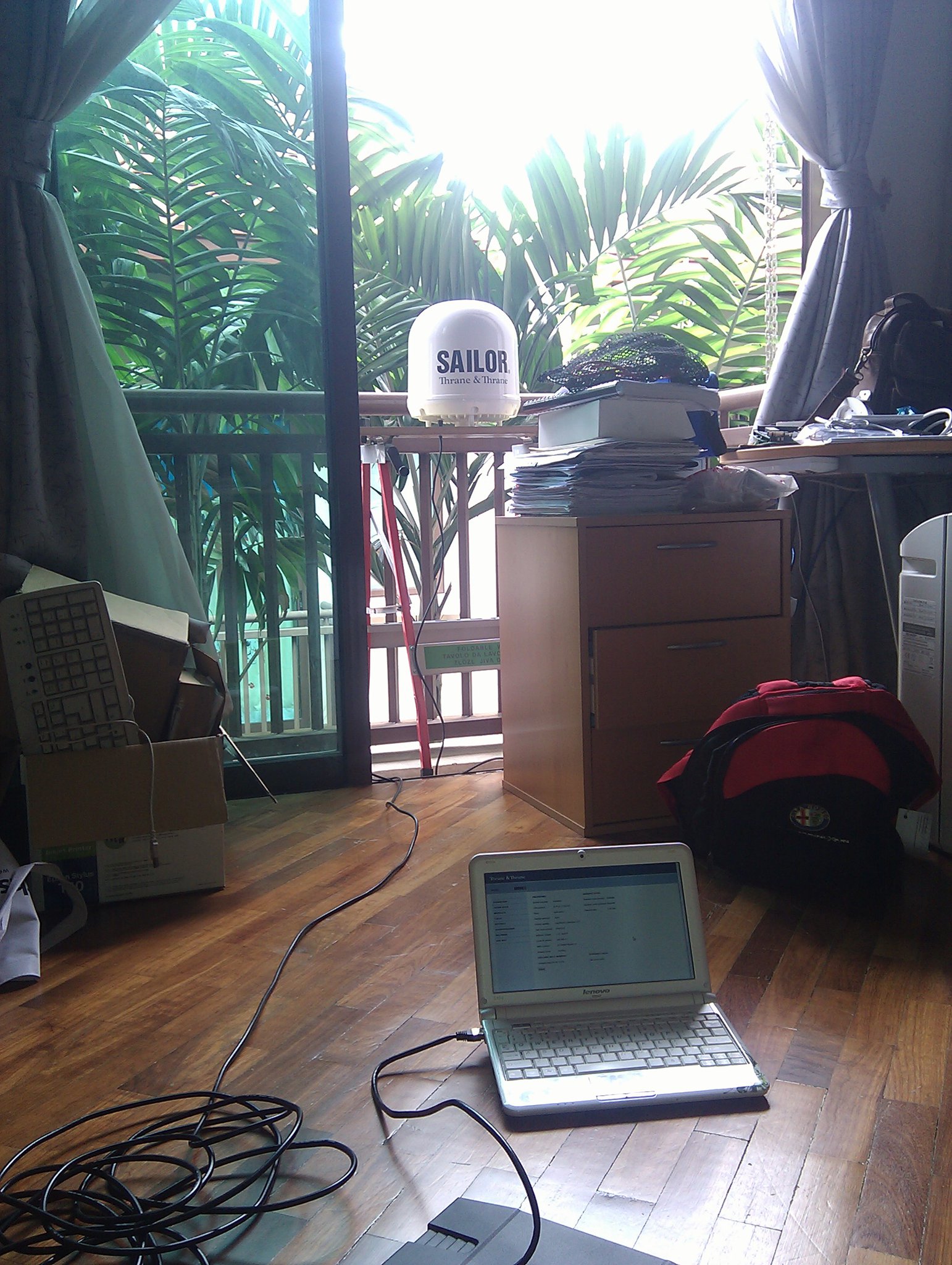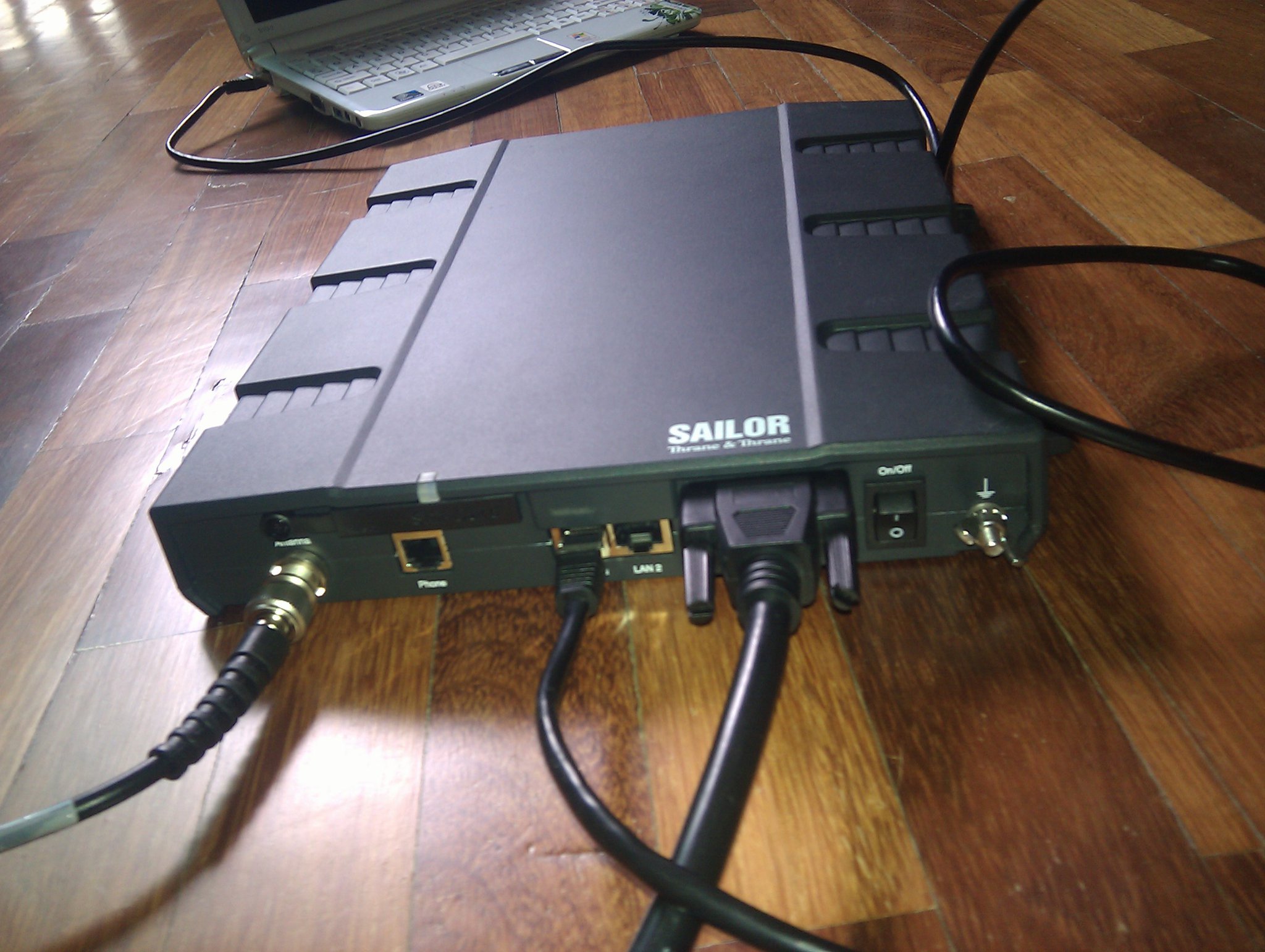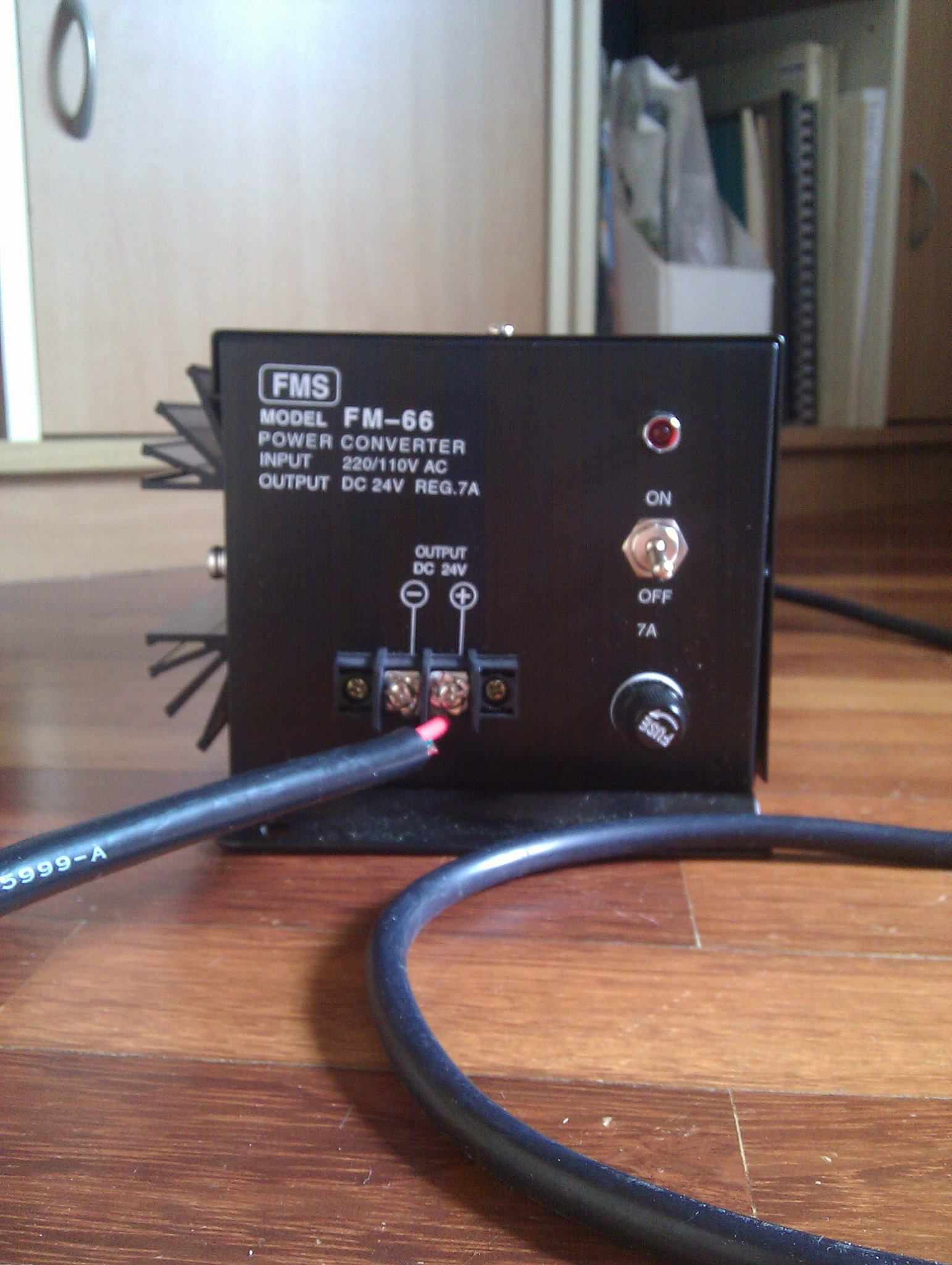Preparing for when UniFi/Streamyx, Maxis and Digi all go down at the same time …

You never realise how dependent you are on an internet connection until you find yourself “offline” one day. So far, whenever Streamyx/UniFi goes down (and this has been quite rare unless something gets hit by lightining), I still have my Maxis mobile to fall back on, and failing that there’s a Digi SIM card I use for testing equipment with.
But what if they all fail at simultaneously? How do you live without an internet connection?
The answer is I can’t … so just to be safe, I installed a satellite-based internet connection to my house.

Woo ha ha … just kidding only lah. Satellite connections cost a bomb, this one is borrowed from a project to test, as we couldn’t get a signal from our office window. Eventually, it’s to go sit on a ship somewhere in Indonesia. I’m not even sure how we got it into the country, but I’m doing a “don’t ask, don’t tell” right now (well not really, as you are reading about it).
It uses the Inmarsat BGAN satellite network, with the asia pacific bird (yeah, must talk like I know these things) at 145 °E. The equipment we are using, Thrane and Thrane’s Sailor 150, has an antenna designed to work on a moving and swaying ship. Here’s the communication’s box:

And it comes with the mother-of-all-power-supplies:

There’s also this warning on the back of the antenna to stay at least 0.6 meters away from it:

I did some calculation (actually a website did it for me) which indicated that the satellite would be at 93 °E from true north, and about 39° up from the horizon. That puts it … on the other side of my rear neighbour’s roof. I gave it a try anyway, and got a “full bar” signal.
The system comes with a SIM card and a handset for making satellite calls, but given the cost and the fact that we’re not using that, I didn’t connect that up. I believe it runs SIP VOIP with a 4kbps codec, as the handset has an ethernet port on it.
I set it up to autostart the data connection, so all that was needed is to get your equipment on the LAN and wait for it acquire a signal, and you’re all set:

=== root@nb-shahada:~# ifconfig eth0 192.168.0.10 up; route add default gw 192.168.0.1 root@nb-shahada:~# ftp 202.90.198.71 Connected to 202.90.198.71. 220 (vsFTPd 2.0.5) Name (202.90.198.71:shahada): testftp 331 Please specify the password. Password: 230 Login successful. Remote system type is UNIX. Using binary mode to transfer files. ftp> binary h200 Switching to Binary mode. ftp> hash Hash mark printing on (1024 bytes/hash mark). ftp> prompt Interactive mode off. ftp> passive Passive mode on. ftp> put /home/shahada/file2.txt local: /home/shahada/file2.txt remote: /home/shahada/file2.txt 227 Entering Passive Mode (202,90,198,71,51,221) ftp: connect: Connection timed out ftp> passive Passive mode off. ftp> dir 200 PORT command successful. Consider using PASV. 150 Here comes the directory listing. drwxr-xr-x 2 ftp ftp 4096 Dec 16 07:30 testuser 226 Directory send OK. ftp> cd testuser 250 Directory successfully changed. ftp> put file2.txt local: file2.txt remote: file2.txt 200 PORT command successful. Consider using PASV. 150 Ok to send data. # 226 File receive OK. 20 bytes sent in 0.00 secs (139.5 kB/s) ftp> passive Passive mode on. ftp> put file1.txt local: file1.txt remote: file1.txt 227 Entering Passive Mode (202,90,198,71,187,45) ftp: connect: Connection timed out ftp> bye 221 Goodbye. ===
I had a problem with a “passive” FTP connection, but the regular “active” worked fine. Which is strange, as usually it’s the other way around. Could be due to some packet filtering. To save costs, we got the satellite provider to block all IP and hosts ports except the ones we need for our traffic. This is in case the guys on the ship get bored and fire up YouTube … *grin*
This post was originally published as a Facebook Note at 2010-12-18 15:35:03 +0800.



